They say you don’t know until you try. Well, I tried. So now I know.
On paper, Dragon’s Back isn’t really the ideal race for me. It covers 380km with 16,400m of up and down along the spine of Wales over the course of six days. Unsurprisingly, most days are hilly and a bit technical in places. That’s all fair enough, but you’re supposed to stop every evening to go again the next day. I hadn’t done anything like this before and I wasn’t quite sure about all the stopping and starting. It was something different though, and with no plan in place after this year’s Northern Traverse it seemed like the right moment to try.
After a few disappointing summers with races being cancelled and other bigger and smaller setbacks, I made the conscious decision to not focus too much on the actual race over summer. I’d be running a lot anyway since that’s what I like to do, and I was going to spend a few weeks in the Alps which would mean plenty of the steep stuff. I did make sure to scramble a bit more often and go out on technical terrain just to be comfortable with it, but I had no plans to try and get any faster on it. I just don’t really have any ambitions in that direction. Instead I focussed on being calm and patient on sections that I’d view as not my type of terrain and get through them efficiently, without getting hurt or frustrated. Cue ridges from my back door after a draining workday and dodgy boulder fields 40km into an alpine long run.
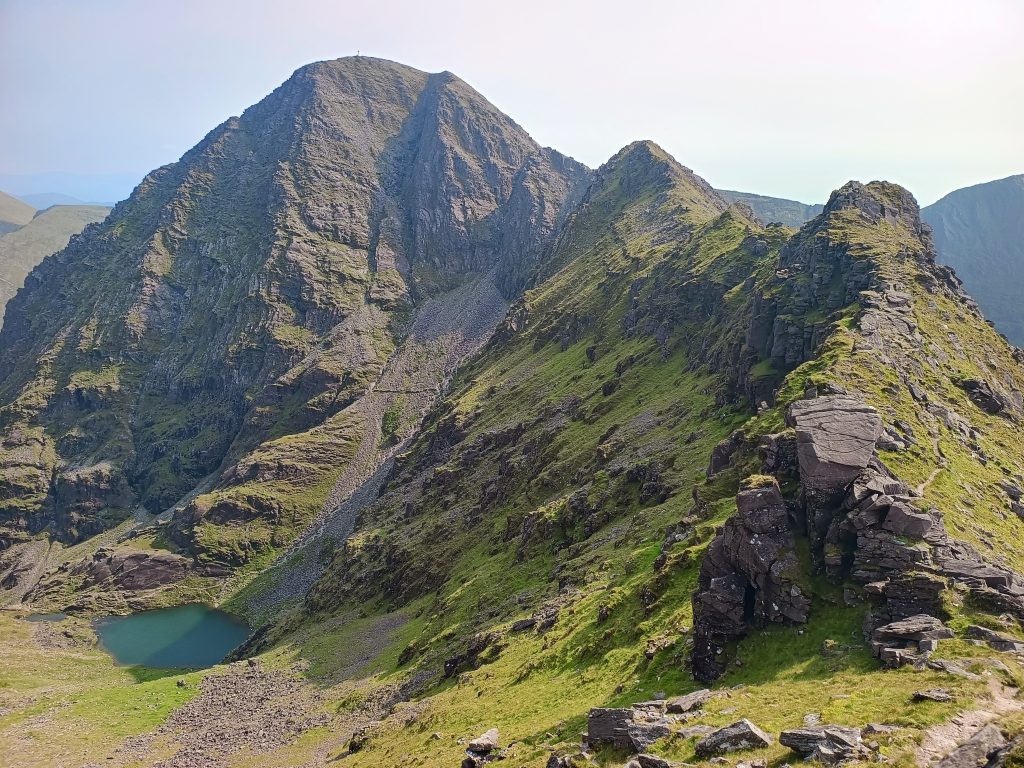
As race week drew closer I started taking a more detailed look at the maps, comparing lines and coming up with my own route choices and time estimates for each day. When I weighed my kit, I had about 5kg to spare which meant room for lots of extra food and clothing. My race plan was pretty simple: survive day 1 and 2, don’t do anything stupid on day 3 and 4, see if I can still run on day 5 and 6. Most of all I was hoping to actually see something of Wales. I rarely get the chance to travel somewhere without the weight of my laptop on my shoulders so I was really looking forward to this ‘running holiday’.
My B&B in Conwy turned out to be completely occupied by fellow aspiring dragon slayers and breakfast on Sunday morning was like a Dragon’s Back pre-race meeting. Some people even recognised me from my Tea & Trails podcast episode which made me quite nervous as I don’t remember what I said on there. I’d been lugging my bag around airports and train stations all day Saturday so my arms and shoulders were sore, but I told myself I’d be needing my legs more so than my arms. It’d be fine. Kit check was smooth (ish) and after the race briefing I settled in for a lovely sleepless night listening to the lashing rain outside.
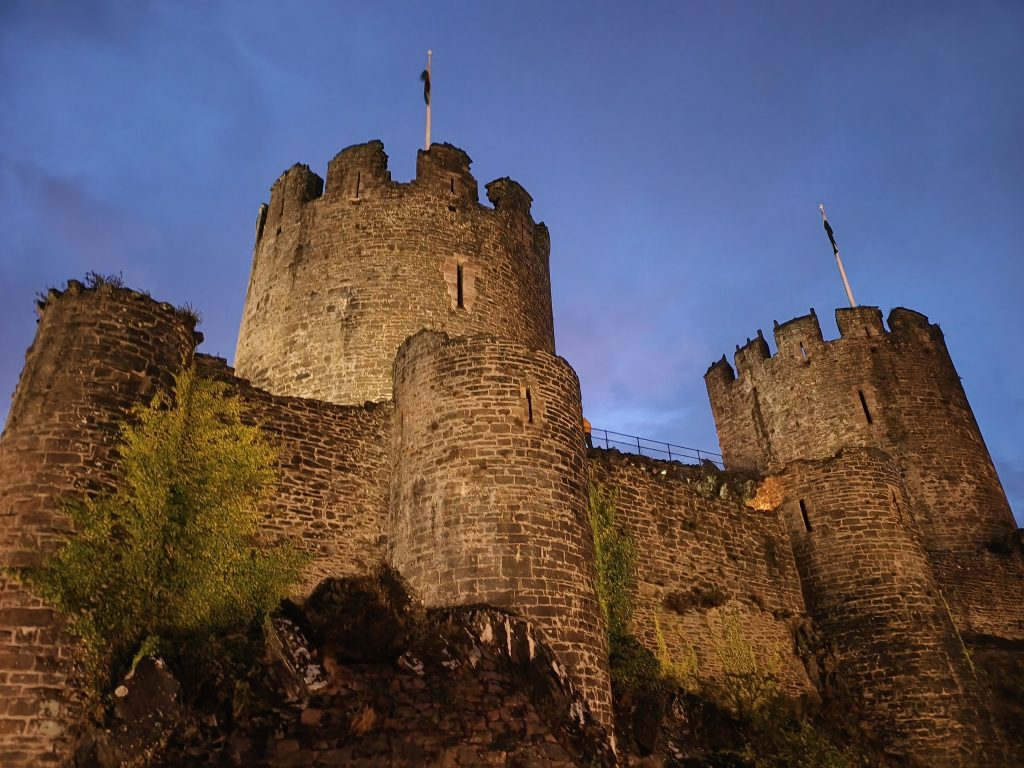
Monday morning was still wet. I enjoyed the brilliant packed breakfast (thank you Bryn Derwen Guest House) and walked to Conwy Castle to drop my bags before the start of day 1 (50km/4100m). Start lines are usually not my favourite part of a race but this was something else. The setting and the atmosphere were simply amazing and I don’t think there are many races where you get to run through a castle at dawn (some footage in the first minute of this video). We got a surprisingly stunning sunrise given the weather, but after that the clouds descended again and what was already wet got even wetter. The first half of the day was more runnable than I’d expected so I tried to make the most of that, knowing what was to come. I was glad I hadn’t recced any of the route as runners around me were commenting on the state of the course and the amount of streams and rivers that weren’t supposed to be there. Sometimes ignorance is bliss as I just kept splashing through what seemed to be a trail although it might as well have been one big waterfall.
The second half of day 1 is where I put my patience training into practice. This type of terrain would be challenging for me on the best of days and the rocks were now so slippery that it was pointless for me to try and keep any sort of pace. Naturally I did try at first because people were passing me on the Glyders and they made it look easy, but when I tried to keep up with them I fell hard. My shin didn’t look great and continued to hurt for the rest of the day, which served as a good reminder to be sensible and know my weaknesses.
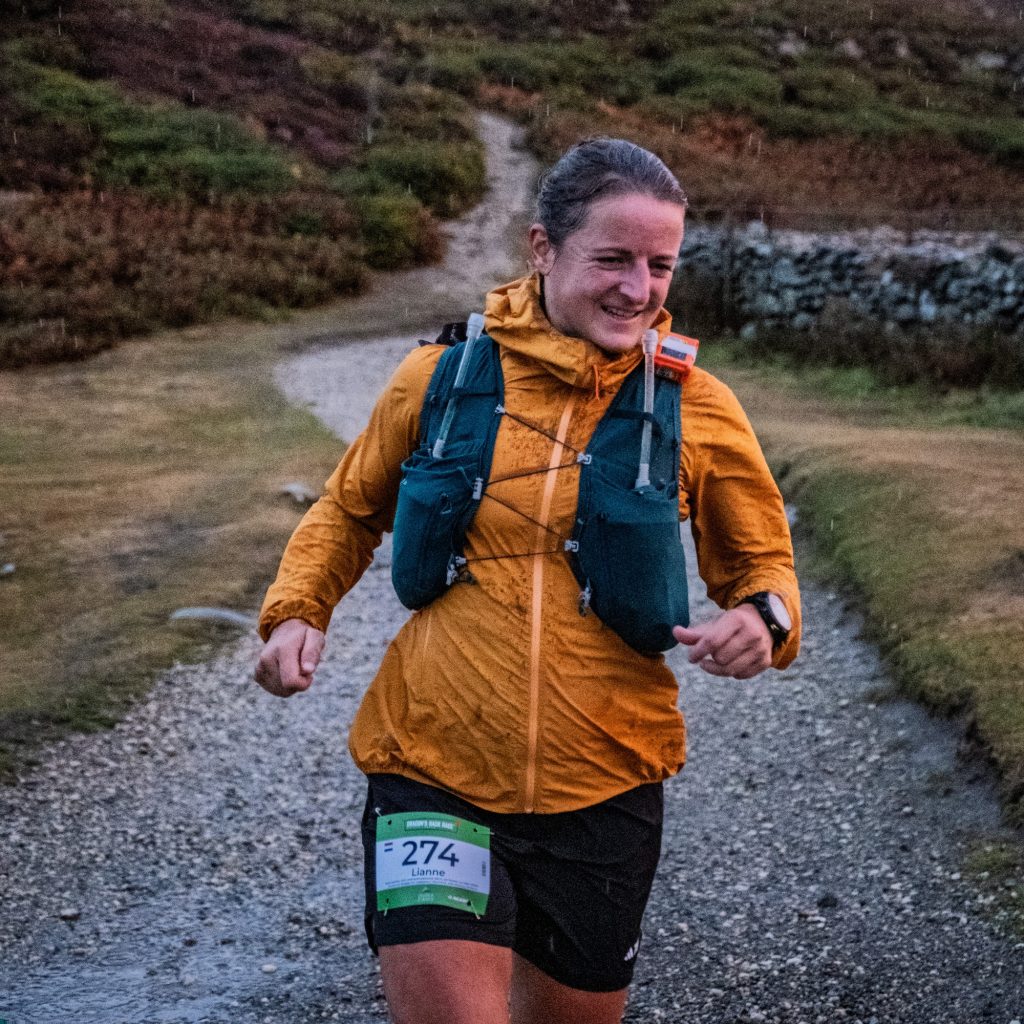
We didn’t get to do the infamous Crib Goch ridge due to the bad weather, something I only fully appreciated once I reached the top of Snowdon and was being battered by the wind. Visibility still wasn’t great but it was supposed to be a horseshoe, so I reckoned if I kept the drop to my left and my feet on solid ground I would make it to camp eventually. I finished day 1 with a big smile on my face, knowing I’d completed one of the hardest days for me personally.
That smile soon disappeared when the reality of camp set in. Don’t get me wrong, the camps were extremely well set up and the people were nice. My tent mate Sam was lovely and very organised, something I tried to match but couldn’t. Being reunited with my overnight drop bag was possibly the low point of my day on most days. I’d thought this through, I knew what to do, but after being out in the elements all day the last thing I wanted to do was empty my drop bag and organise my stuff again. I still did what I was supposed to do though: make my recovery drink, wash myself in the stream, put on dry clothes, get food and organise my sleeping situation. I ate until I physically couldn’t eat any more and went to bed early that night. I had a weird dream about a helicopter and was later surprised to hear that the entire camp had had the exact same dream. Turns out there’d been an actual rescue on the hill.
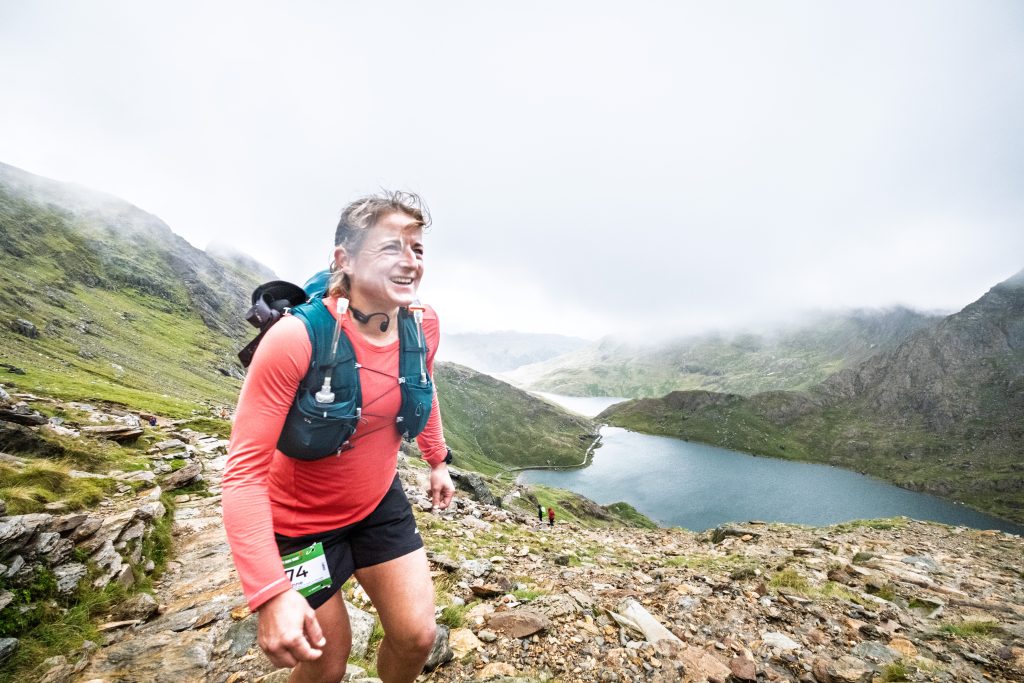
Thankfully you get to choose your own start time at Dragon’s Back, so from day 2 onwards I kind of got into my own rhythm. My 5.30am alarm was still way too early for a non-morning person like me but I tried my best to start my run around 7.30am each day. This meant that by the time my legs had started to work again an hour into the run, my brain was also about to wake up properly.
Because I was often one of the last full course runners to start, my days all followed a similar pattern. In the first hour of my run I’d often bump into one or two early starters who unfortunately had come to the conclusion that they were too badly injured to continue. They’d turned around to make their way back to camp. After a while I’d start passing some ‘Hatchlings’ doing the shorter course and then the race leaders would pass me (although on several occasions they would’ve started their day before me and I’d never see them). I’d then begin to pass the back of the pack of the full course – the heroes who are grinding out the longest days – and some of the middle of the pack. Eventually it’d get quieter again and I’d finish most days around 6pm, in time for dinner and drop bag.
Day 2 to 4 are a bit of a blur. I think some of it got lost in a void because I never really had the brainspace to process anything. What I do remember is that day 2 (60km/3200m) brought more technical and slippery stuff. Everyone had been talking about Cnicht because the descent was supposed to be horrible, but by the time I reached the water point for that day I realised I was already way past that section without having taken any notice. I guess for me it kind of blended into everything we’d already done so far.
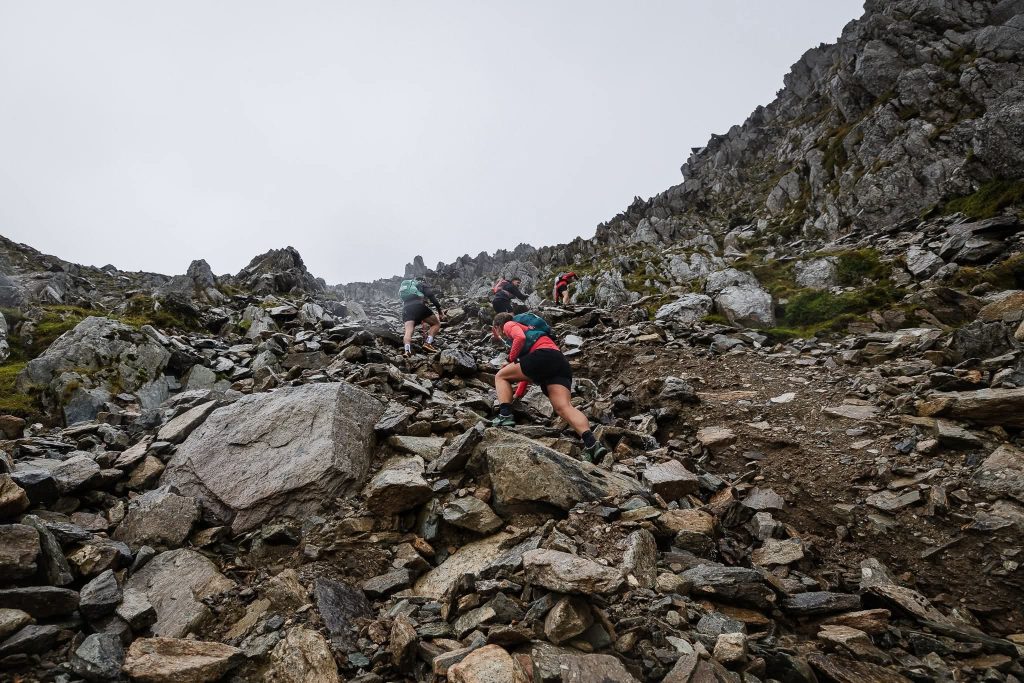
I did hurt the same shin again and my watch froze completely that day, making navigation difficult and causing a lot of frustration. I lost quite some time because of all the naviguessing and would often go way off track right when other people were watching (bonus points if they were from the media team). It made me feel like an awful impostor, but I tried to make do with my phone and map and was very grateful for the long road section into camp: easy to navigate and runnable. Thankfully that night I learned how to reset my watch on the go, so at least I had a plan of action for the rest of the week.
Cold weather kit was mandatory for day 3 (66km/2900m) because of the conditions up on Cadair Idris, the biggest climb of the day. It was another one of those hills that people had been talking about, but I didn’t think it was that bad on the day. Although the weather was a bit mental and the ground was sloppy, I was just happy to be on bog and grass. I actually enjoyed the climb because I finally felt like I could get some sort of momentum going. One thing worried me though. I wasn’t meeting anyone else. Had I started too late? Was I moving too slow? Was I… going to miss the cut-off at the water point?
It was too wet and windy to get a phone or map out to check the cut-offs and because visiblity was so limited I couldn’t see anyone up ahead. So I just climbed as fast as I could, hoping I hadn’t messed up my race. Just before the summit I met the first 6am starter and then I started passing more of them. They all seemed pretty relaxed and I realised I was probably safe enough, especially when I saw what the descent was like. I flew down (or so it felt), overjoyed because I wasn’t going to get timed out and because things were supposed to get easier for me from here on out. Time for ultra mode.
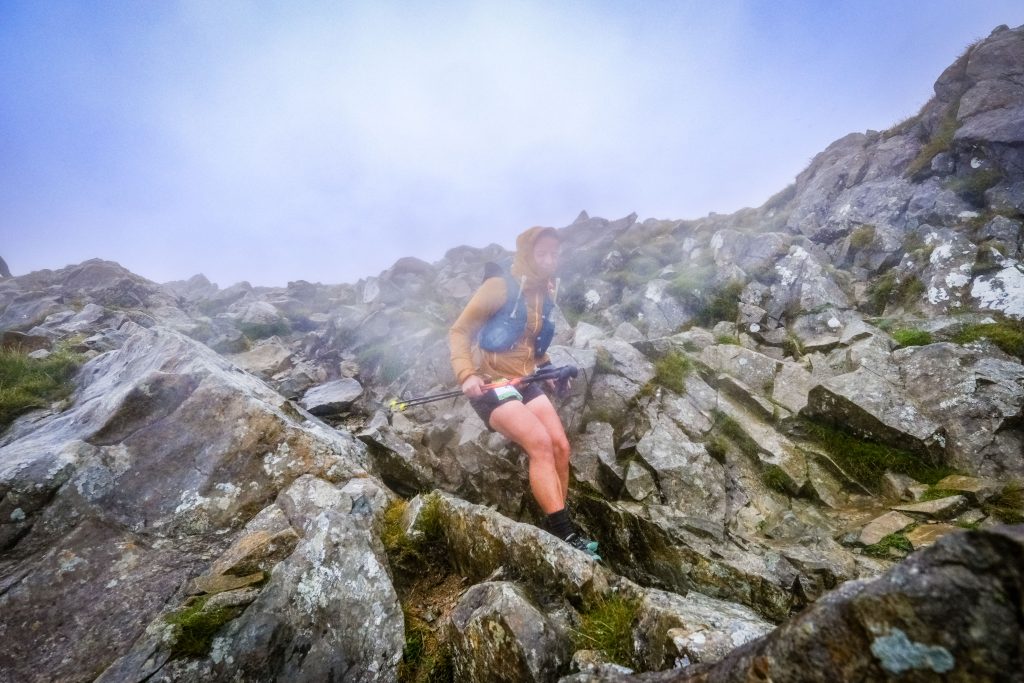
Or so I thought. My only real problem now was chafing. I always run in shorts but wet fabric day in day out isn’t the best for your skin. After some minor issues on day 2, the second half of day 3 turned into a bit of a nightmare. My skin was being shredded to pieces as the day went on and it got to the point where I considered just continuing shorts-less. I didn’t know if there was anything in the race rules about being fully clothed at all times though and it wouldn’t have made much of a difference anyway, so I kept pointlessly reapplying Bodyglide on my wet skin and hoping I could still solve this issue in camp. With some expert remote advice and some drier weather (and loads of tape and Vaseline) I managed to prevent it from getting worse in the second half of the week, but now I understand how chafing can be race-ending for people.
To say camp wasn’t getting any easier as the week went on would be an understatement. I wasn’t sleeping which wasn’t great for recovery and my emotional state, as evidenced by some teary breakfasts throughout the week. But although I was sore and tired, I always felt fine once I got moving again. In a way running was actually the easier part.
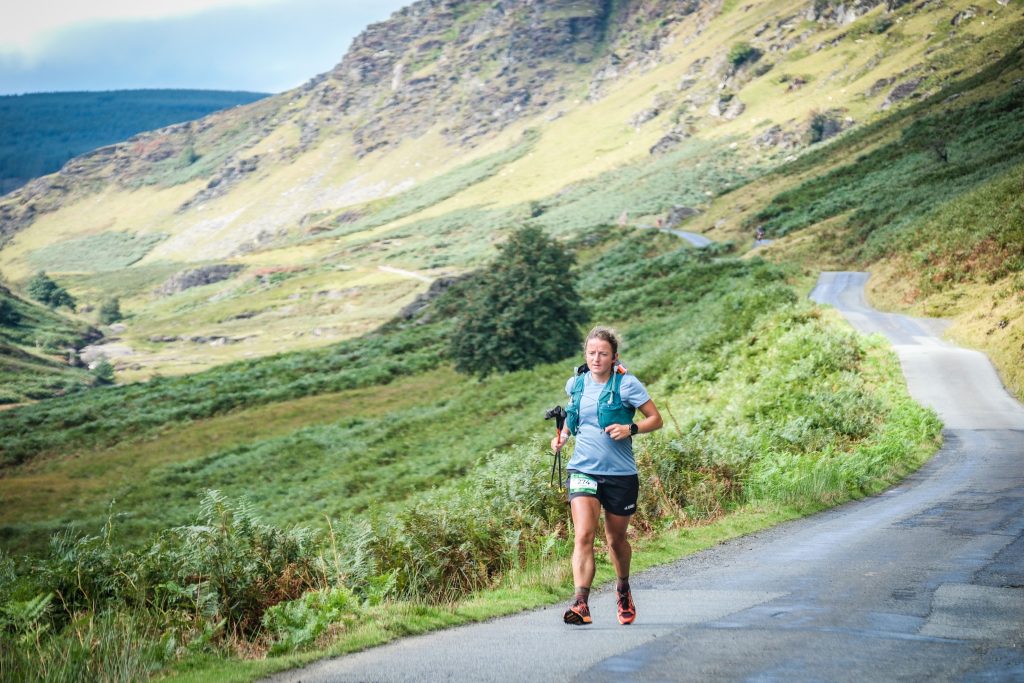
I’ve been staring at the map of day 4 (70km/1900m) trying to bring back some memories, but I don’t seem to have registered a whole lot. There was quite a bit of road because I remember seeing cars out recceing for a rally the next day (where the photo above is taken, among others). That’s about it though. I was wearing a t-shirt so I presume the weather was nice? This is my most fragmented race report yet.
Day 5 (72km/3200m) I do remember. The apprehension in camp was tangible as it’s the longest day and pretty late in the week at that. It starts with a fairly runnable 40km followed by a trek through the Brecon Beacons. Although I was half dreading it, I was also looking forward to seeing this part of the course. It was supposed to be a dry and relatively clear day so there was a chance I’d actually get some views on these hills that I’d never visited before. I even tried to start a little bit earlier than usual that day.
The Welsh weather delivered and the legs were doing what I hoped they’d do. Climbing felt good, descending wasn’t too bad and although I was very tempted to take a trail nap here and there, I kept myself awake by eating and then eating some more. A friendly bearded Kiwi who’d unfortunately had to drop out had gifted me some of his food in camp which helped me get through the day with a bit more variety than usual. The last 5km into camp felt like the longest of the entire week, with a never-ending river path that had even the biggest purist long for a bit of smooth tarmac. Once this day was done though, it was more or less a given that you’d make it to the finish line in Cardiff.

On the morning of day 6 (65km/1300m) I was well-prepared and unusually cheerful. We all had to be out the door by 7.30am and I was very motivated to get that last day done. The thought of a hot shower, a pint and a bed that night had me all excited. Day 6 in the Dragon’s Back is a bit like the Vale of York in the Northern Traverse. If you can still run it, you can have a nice strong day. If you can’t… You’ll still get there, but it might be a bit of a slog. Fortunately I didn’t repeat my two Vale of York experiences and managed to run well the entire day.
My left achilles had been acting up the day before and was getting pretty angry now, which meant hiking uphill was not very fast. The solution was simple though. I could still run pain-free, so I kept jogging uphill for as long as possible. When jogging was no longer an option, I’d just take the steepest line up and get it over with. Clearly my body knew we were nearly there, as halfway through the day everything started to rebel and telling me to stop. I laughed it off because it was a bit late to be giving up now. There was a fun atmosphere out on the course because everybody was equally broken and thrilled with the finish line in sight.
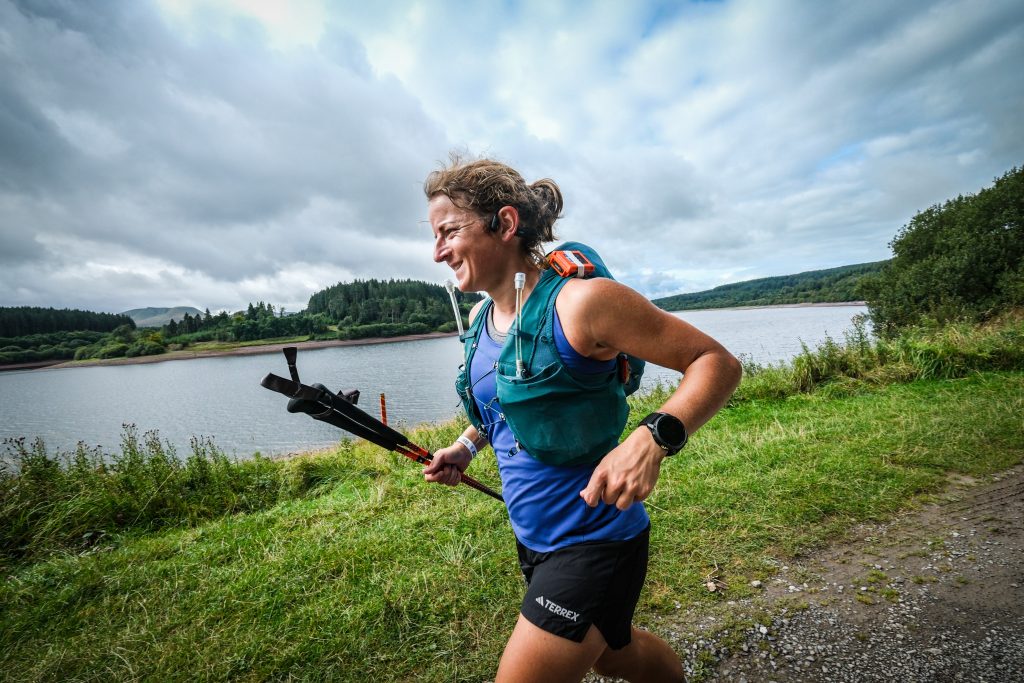
The last 5km coming into Cardiff I forced myself to just keep running. The park was filled with tourists, walkers and cyclists and it was all a bit much. My ultra shuffle turned into a jog and something resembling a run, as my legs found another reserve. There wasn’t this wave of emotion that you’ll often feel towards the end of an ultra, but I was definitely proud and relieved when I finally reached Cardiff Castle. I was delighted with my placing as 3rd female/10th overall and happy with the decisions I’d made during the week which had lead me to this point. I’d followed my very loosely defined ‘race plan’ (survive – don’t be stupid – run) and it had allowed me to be flexible and finish strong.
But what was possibly even more important to me, was the way I’d struggled my way through the non-running part of the week. I’d managed to come up with a routine that worked for me, more or less, even though it was a bit different from what other people were doing. I’d managed to embrace the experience including the highs and lows, have a laugh and a cry, and have a bit of fun with all the others. I’d worked with my strengths and weaknesses and for once hadn’t wasted any energy battling myself. Possibly a result of taking the pressure off, making clear decisions beforehand and sticking with them. It made for a much better race experience overall.
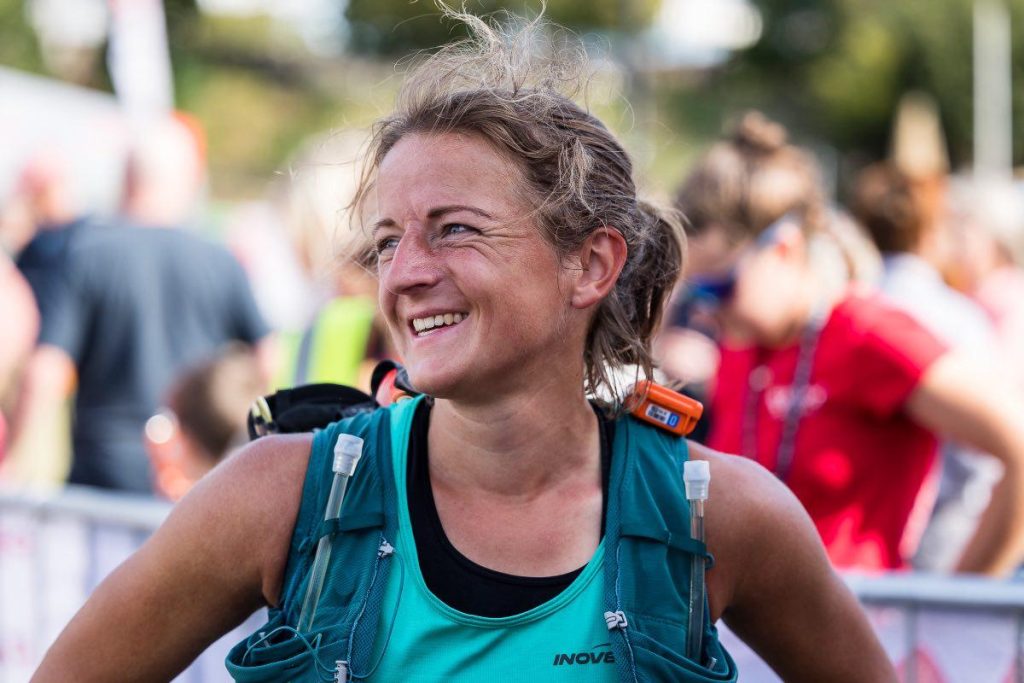
On paper, Dragon’s Back wasn’t the ideal race for me. In reality it wasn’t either. Funnily enough it wasn’t the terrain or the distance that tested my limits the most (although that certainly wasn’t easy either), but the format itself. It takes a certain type of person and I may not be that person. Continuous races make more sense to me because if I’m not going to be sleeping anyway, I might as well be out on the trail. It’s easier for me to stay awake and moving than to have a week of early alarms with all the packing and unpacking that comes with it. I’m glad I did it though, grateful for the experience as a whole and the fact that I got through it without any visits to the medical tent. I’m even more excited now for where my legs might carry me next.
A massive thanks to the Ourea team for running such a smooth event in pretty challenging conditions. To Shane, Libbi, Olivia, Katie and all the others for their kindness. To Katie in particular for her help after the race. To Sam and my other tent mates for putting up with my organised chaos and to everybody out on the course and in camp for being absolute legends. Oh and to the bearded Kiwi for the crisps. I owe you.
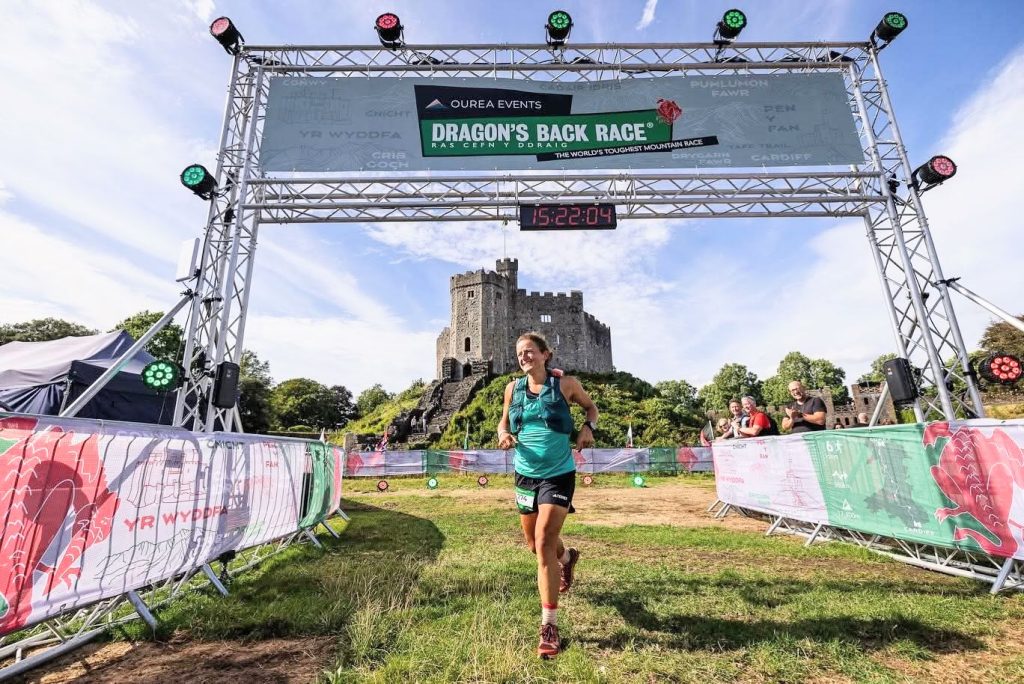


Prachtig ❤️ We zijn trots op je ❤️
Great race report Lianne and congratulations on getting it done
Lianne, super gedaan!
Ik doe het je niet na.
Anne
Great to see you again – just glad it wasn’t in Richmond! . “Survive – Don’t be stupid – Run” ….. from now on, that’s going to be my number one “race plan” (although I might adapt it slightly to : Survive – don’t be a fanny – keep moving forward). Fantastic race report – you survived the camps and the race, and finished with a smile on your face. You nailed it! Always a pleasure to help. Here’s to the next time whenever and wherever that might be ☺️.
This is such a great race report, such a great way to capture the memories. Thank you for being such a fab tent mate. You weren’t as disorganised as you think you were! It was really inspiring to share the tent with other women who did so well. You are awesome!